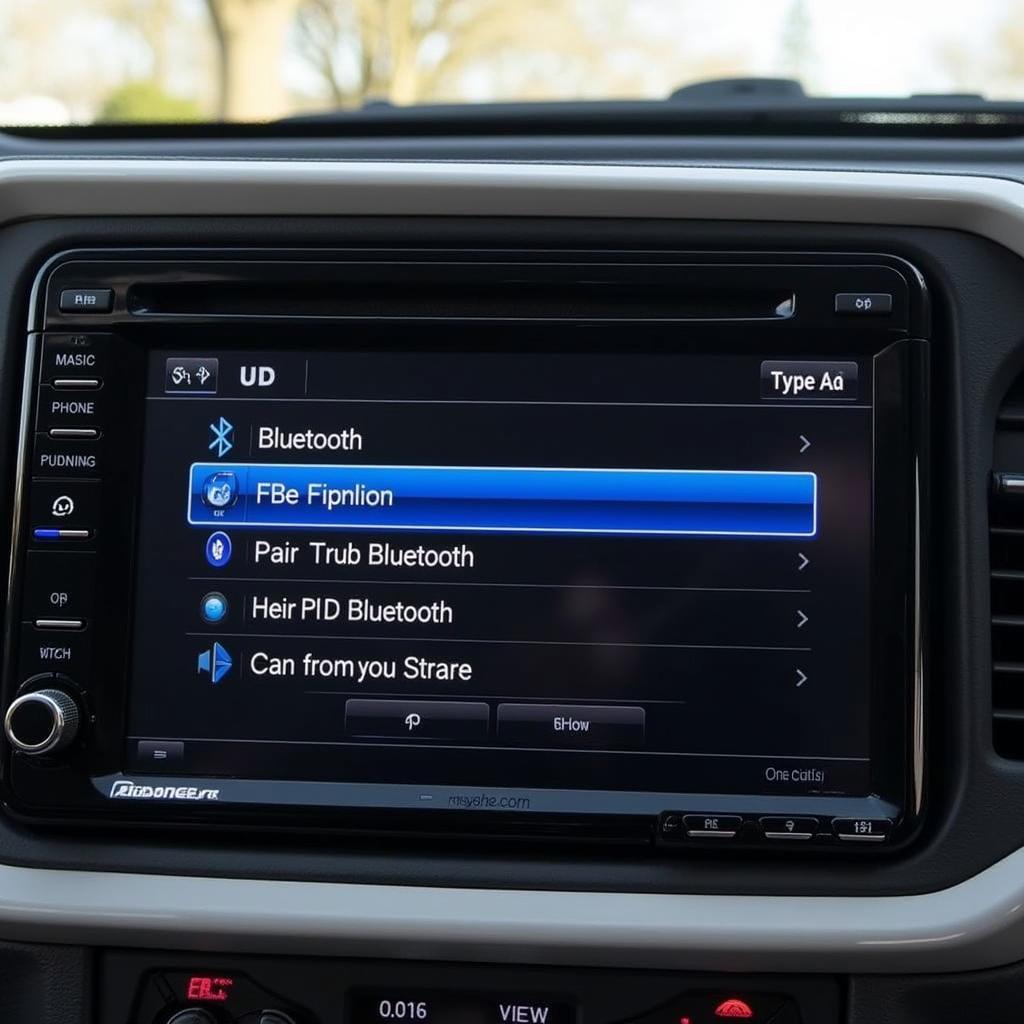The Toyota Prius, known for its fuel efficiency and reliability, can occasionally throw a curveball with a glowing yellow brake warning light. While this light might not always signal a critical issue, ignoring it can lead to more severe problems down the road. This article will guide you through the common causes of a yellow brake warning light on your Toyota Prius and provide potential solutions to get you back on the road safely.
Understanding the Yellow Brake Warning Light
Unlike a red brake warning light, which often signifies a serious and immediate braking system malfunction, a yellow brake warning light typically indicates a less severe issue or a system malfunction that doesn’t directly affect your braking ability. However, it’s crucial to remember that any warning light on your dashboard deserves attention.
Common Causes of a Yellow Brake Warning Light on a Toyota Prius
There are several potential reasons why your Toyota Prius might display a yellow brake warning light. These include:
- Low Brake Fluid Level: The most common culprit is a low brake fluid level. Brake fluid is essential for transmitting the force from your foot on the brake pedal to the wheels, allowing you to stop. A leak in the brake lines or worn brake pads can cause the fluid level to drop, triggering the warning light.
- Faulty Brake Light Switch: The brake light switch, responsible for activating your brake lights when you press the pedal, can malfunction. This can lead to the yellow brake warning light illuminating, as well as issues with your brake lights not functioning correctly.
- Worn Brake Pads: Your Toyota Prius is equipped with a brake pad wear sensor. As your brake pads wear down over time, the sensor will eventually trigger the yellow brake warning light, indicating it’s time for a replacement.
- Malfunctioning ABS System: While less common, a problem with your Prius’s Anti-lock Braking System (ABS) can also trigger the warning light. The ABS system prevents your wheels from locking up during hard braking, ensuring optimal control and stability.
- Issue with the Vehicle Stability Control (VSC) System: The VSC system works in conjunction with your ABS to maintain traction and stability, especially on slippery surfaces. A malfunction in this system could also illuminate the yellow brake warning light.
Diagnosing the Problem
Determining the exact cause of the yellow brake warning light requires some investigation. Here’s a step-by-step guide:
- Check the Brake Fluid Level: Open the hood and locate the brake fluid reservoir. It’s usually a translucent container with a black cap marked “DOT 3” or “DOT 4.” Check the fluid level against the minimum and maximum markings on the reservoir. If it’s low, adding brake fluid might temporarily address the issue, but it’s crucial to have a mechanic inspect for leaks.
- Inspect the Brake Lights: Have a friend or family member press the brake pedal while you check if all brake lights illuminate correctly. If one or more lights are out, it could point to a faulty brake light switch.
- Listen for Unusual Noises: Pay attention to any unusual sounds coming from your brakes, such as grinding or squeaking. These noises could indicate worn brake pads that need replacement.
When to Seek Professional Help
While some causes of a yellow brake warning light can be addressed with simple DIY fixes, it’s crucial to consult a qualified mechanic, especially if:
- You notice a significant drop in brake fluid level.
- Your brake pedal feels spongy or goes closer to the floor than usual.
- You hear unusual noises while braking.
- The warning light persists even after topping off the brake fluid.
- You suspect an issue with the ABS or VSC system.
Attempting to diagnose or repair complex brake system components without proper knowledge and tools can be dangerous.
Remote Diagnostics and Software Solutions: The Future of Car Repair
In today’s technologically advanced world, remote diagnostics and software solutions are revolutionizing the way we approach car repairs, including issues related to brake warning lights.
“Remote diagnostics allow us to analyze a vehicle’s data in real-time, often pinpointing the root cause of a warning light without the need for an immediate in-person visit,” says Emily Carter, Senior Automotive Engineer at CarDiagTech. “This saves time and money for car owners while providing quicker solutions.”
These advanced systems can remotely identify software glitches, sensor malfunctions, and even complex issues within the ABS and VSC systems. In some cases, software updates or recalibrations can be done remotely, eliminating the need for a physical visit to a mechanic.
yellow brake warning light priius
Preventing Future Brake Warning Lights
While it’s impossible to completely eliminate the chances of a brake warning light appearing, proactive maintenance can significantly reduce its likelihood.
- Regular Brake Inspections: Incorporate a thorough brake inspection into your regular car maintenance schedule. A mechanic can check the brake fluid level, inspect brake pads and rotors for wear, and ensure the overall health of your braking system.
- Timely Brake Fluid Flush: Brake fluid absorbs moisture over time, which can reduce its effectiveness and potentially damage brake components. Consult your owner’s manual for the recommended brake fluid flush interval for your Toyota Prius.
- Adopt Smooth Driving Habits: Hard braking and rapid acceleration put excessive stress on your brakes, leading to faster wear and tear. By driving smoothly and anticipating stops, you can extend the lifespan of your brake pads and minimize strain on the entire braking system.
Conclusion
A yellow brake warning light on your Toyota Prius, while not an immediate cause for panic, should never be ignored. Understanding the potential causes and taking prompt action can prevent minor issues from escalating into major headaches. Remember, a well-maintained braking system is paramount for your safety and the safety of others on the road.



